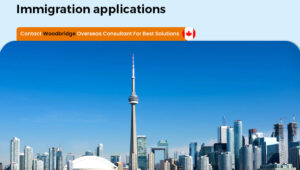
An Australian partner visa allows an Australian citizen or permanent resident or eligible New Zealand citizen to come and stay in Australia. This visa generally takes around 12 to 15 months to get processed. However, while making an application, applicants find it hard to decide whether to choose an onshore or an offshore option.
The Partner Visa Subclass 309 is an offshore visa, while the Partner Visa Subclass 820 is onshore. In addition to these two, other partner visas fall into specific categories. This blog will give you a detailed guide on their benefits and how you should apply for them.
What are the different Partner Visas available in Australia?
Currently, there are three types of partner visas issued by the Australian Immigration Department:
- Prospective Marriage Visa Subclass 300
- Offshore Partner Visa (Subclasses 309 and 100)
- Onshore Partner Visa (Subclasses 820 and 801)
We have discussed the necessary details of these visas in the upcoming sections to understand the differences between them quickly.
What is the Prospective Marriage Visa Subclass 300?
With the Prospective Marriage Visa 300, an applicant can come to Australia and live with their partner temporarily. Usually, you can live for a maximum of 9 months with your partner before your marriage. You have to make the application overseas and also be outside Australia when the decision is made.
What is a Partner Visa?
By definition, a partner visa enables a de facto partner or spouse of an Australian PR or citizen or a New Zealand citizen to come to Australia and stay either temporarily or permanently.
What is meant by an onshore Partner Visa?
An onshore partner visa is an Australian visa that is processed in two stages. For both stages, you have to apply for two separate partner visas.
- In the first stage, you have to apply for the Visa Subclass 820. It is a temporary visa, with which you can live for 2 years with your partner in Australia.
- To stay in Australia permanently with your partner, you will need to apply for the second stage visa, the Partner Visa Subclass 801.
While applying for an onshore visa, you have to keep in mind the following conditions.
- First of all, you should be physically present in Australia at the time of application and at the time of the visa decision.
- If your current temporary visa validity nears completion when you apply for the permanent partner visa, you will be granted a bridging visa. With this bridging visa, you can stay in Australia when your permanent partner visa gets processed.
- In addition, you can also work and study while having this bridging visa.
- A bridging visa does not allow the holder to travel abroad. For that, you will have to apply for a BVB – travelling.
What Is Meant By An Offshore Partner Visa?
An offshore partner visa is an Australian visa that is also processed in two stages. Here also, you will need to apply for two separate visas for two different stages.
- The Visa Subclass 309 is the first stage visa, which will allow you to live for 15 to 24 months.
- With the temporary partner visa nearing expiration, you can apply for the next stage, Partner Visa 100, which is a permanent visa.
The main difference between an onshore and offshore visa lies in their application processes. While you have to be inside Australia both at the time of application and visa decision for an onshore visa, an offshore application should be made from outside Australia. The main features are as follows.
- For the 309 Visa, you should not be physically present in Australia both at the time of application and visa decision. This condition is mandatory for this visa application.
- But for the Visa Subclass 100, the rule is pretty flexible. You can be in Australia or abroad when the decision is made.
- As the application needs to be made outside Australia, there is no bridging visa.
What Is The Application Cost For The Two Types Of Visas?
For an onshore visa application, you can make a combined application for both temporary and permanent visas. The application fee is AUD 7850. Thus, when you make the payment for your 820 Visa application, you will not need to pay again while making the Visa Subclass 801 application. However, if you hold a Prospective Marriage Visa, the payment will be much less, from AUD 1310.
The application fee for an offshore visa is also AUD 7850. You can make a combined visa application for this type too. However, you will have no opportunity to reduce the fees.
Important Points To Remember
Here we discuss several essential points that you should remember while applying for a partner visa.
You have to be in a relationship with your partner
Are you applying for a de facto partner visa? If so, your relationship with your partner should be for a minimum of one year before you apply.
The temporary visa validity is two years
The validity of the temporary visa is usually 2 years. After that, you can get your permanent visa. However, you must remember that your relationship should be continuing and genuine.
Work and study rights on a temporary partner visa
With a temporary partner visa, you will be allowed to work and study in Australia.
Medical benefits in Australia
You can enroll in Medicare, which is the national health care scheme in Australia. Under this scheme, you can enjoy reduced and free medical costs.
Is there government funding available?
While having a temporary partner visa, you cannot get any funding support from the Australian Government for your study.
You will require a sponsor
For every kind of partner visa, you will require a sponsor. The sponsor will be responsible for
- financial obligations,
- living needs, and
- accommodation needs of their partner.
Health and character requirements for the applicants
Like any other visa, you will be required to satisfy health and character requirements for a partner visa. You will have to go through health examinations and fulfil the character specifications set by the Border Protection and Immigration Department.
You will have to prove that you have records of misdeeds. Thus, providing police clearance certificates for each country you have lived in for at least 12 months in the past 10 years will be necessary.
A combined application for the temporary and permanent partner visas
One of the key advantages of an Australian partner visa is that you can make a combined application for both temporary and permanent partner visas and make the payment simultaneously.
Travel restrictions on a temporary partner visa
Until the Department of Immigration decides on your permanent visa, the temporary visa will allow you to travel overseas and return to Australia.
Who can help you with the application?
For necessary help with your application, you can contact a migration agent Perth. The fees of an experienced immigration agent in Perth are usually affordable but can increase depending on the case’s complexity.










